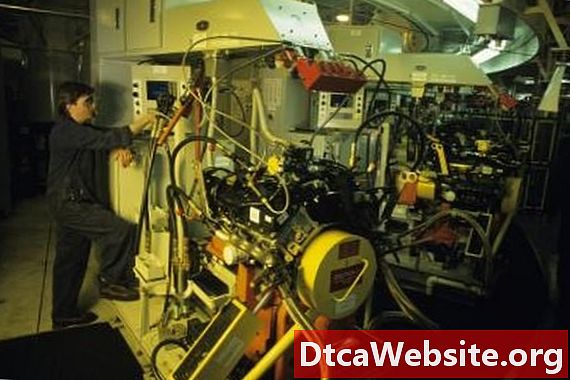
Contenu

Although most vehicle transmission noises relate to internal parts and cannot be seen, their behavior and sound frequency always deal with a moving part according to engine rpm or pressure. Other worn vehicle parts can mimic the noise or feel of faulty transmission parts, so it becomes important how to identify noises specific to certain problems.
Step 1
Drive the vehicle, making numerous stops and accelerations. If you hear a constant whining noise, accompanied by a slip in the gears as the transmission automatically shifts, it points to low transmission fluids. Without the proper fluid level, the pump has to push air through the transmission, which causes the noise and produces the hesitation or slippage. Any leaks on the ground will confirm a loss of transmission fluid.
Step 2
Sit in the vehicle with the engine idling and the shifter in park or neutral. Keep your foot off the brake pedal. Push the accelerator pedal, gently raising the engine rpm. If you notice a humming noise that increases in intensity as the engine rises in speed, it points to a malfunctioning transmission pump or pump shaft. Since the gear train has not been engaged in drive, it rules out all the other components. Consult your repair manual for the location of these components.
Step 3
Listen for a buzzing noise while you have the engine idling and in gear with your foot on the brake. This puts the torque converter in operational mode. Since the torque converter pump, stator and turbine spin freely without engagement during neutral or park, the noise will not be present in those settings. Accelerate slowly in drive and listen to whether the torque converter noise will get quieter as the vehicle moves forward.
Step 4
Place your foot on the brake with the engine in neutral and idling. Raise the rpm slightly over idle. Put the shift selector in drive, while maintaining pressure on the brake. If you hear a loud clunk, or feel a chassis shudder, this could indicate that the torque converter mounts have disconnected or broken. Confirm this by checking the tightness of the universal joints, both front and rear of a rear-drive vehicle.
Step 5
Listen for a heavy clunk when shifting from neutral to reverse and back again. Check the transmission cross member mount (rubber dampers) for excessive wear or splits. A noticeable vibration in the chassis frame during the heavy clunk will point more toward a defective transmission mount rather than a torque converter problem.
Drive the vehicle through its normal transmission shifting range from first to overdrive. Use some fast acceleration, allowing the transmission to firmly shift. Listen for any rumbling, growling or mechanical metal-to-to metal noise in each gear just after it shifts. Such noises indicate problems with the individual planetary gears, input shaft or interior transmission bearings. A single gear can be chipped or worn down, allowing only a noise in that gear. Consult your repair manual for the location of these parts.
Tip
- As an option, place an automotive stethoscope up against the transmission case to narrow down specific noises in order to not t confuse them with other nearby components. Use a floor jack, jack stands, and an assistant to help you safely make these under-the-vehicle checks.
Items you will need
- Owners repair manual
- Auto stethoscope (if applicable)


